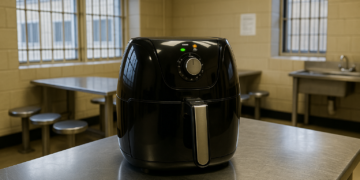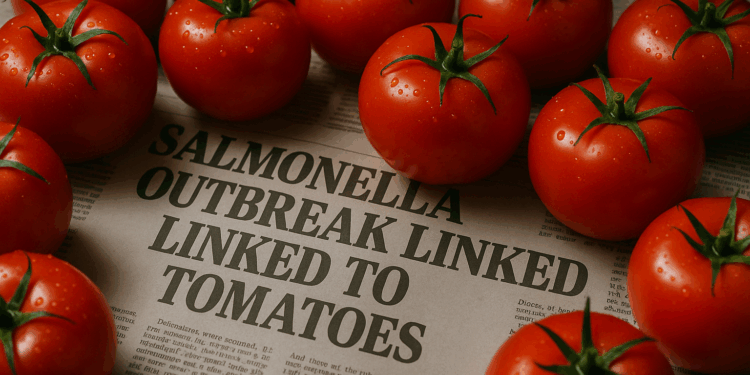Story Highlight
– Surge in salmonella cases linked to tomatoes reported.
– Over 100 people sickened; 14 hospitalized in 2024.
– Rare strains S. Blockley and S. Strathcona identified.
– Record high salmonella cases in UK; 10,000 in 2024.
– Children under 10 years old most affected demographic.
Full Story
Health authorities have raised concerns regarding a significant increase in salmonella infections associated with tomatoes, with over 100 individuals reportedly affected, and at least 14 requiring hospitalisation, due to two specific strains of the bacteria in 2024. These cases have emerged nationwide, as confirmed by UK health and safety regulators, rather than being isolated to particular regions.
Investigations have identified the rare strains Salmonella Blockley, often linked to east Asia and the US, as well as Salmonella Strathcona, which the UK Health Security Agency (UKHSA) has described as exceptionally severe. Lab analyses have confirmed 81 instances of S. Blockley, all traced to tomatoes, while another outbreak involving S. Strathcona impacted 24 people.
The source of the tomatoes remains unclear, with no definitive data on whether they were grown domestically or imported. Research suggests that the smooth surface of tomatoes may facilitate bacterial adherence, increasing the risk of transmission, especially since many consume them raw rather than cooked, where heat could eliminate harmful pathogens. Contamination can also arise from tainted water supplies or through soil that harbours the bacteria.
In addition to the tomato-related incidents, a separate outbreak linked to red meat reported 109 cases. Recent statistics from UKHSA highlight that salmonella cases reached a decade-high in 2024, with an alarming 10,000-plus cases—a nearly 20% rise from the previous year. Children under ten accounted for 21.5% of these cases, indicating a particular vulnerability within this age group.
Dr James Cooper, deputy director of food policy at the Food Standards Agency (FSA), stated: “We are working together to understand the reasons behind the rise in salmonella cases, as well as trends in other pathogens. This analysis will help us take the necessary action to protect public health. We’re also working with industry and local authorities to support businesses to meet their legal responsibility to make sure food is safe.”
Emerging data for early 2025 suggests that cases have continued to climb, with recent figures showing 1,588 cases reported between January and March, an increase from 1,541 during the same timeframe in the previous year, and up from 1,328 in early 2023.























This outbreak is a timely reminder to review produce handling and food safety procedures across supply chains and in homes. Ensure tomatoes are sourced from reputable suppliers and that traceability records are up to date to support rapid investigations. Reinforce rigorous cleaning of preparation surfaces and utensils, separate raw produce from ready to eat foods, and emphasise frequent hand washing, especially when preparing food for young children. Where possible consider removing damaged or overripe tomatoes from use and avoid tasting produce during preparation. Public health messaging should focus on protecting vulnerable groups and clear guidance for retailers, caterers and consumers to reduce further spread.
This is alarming. Immediate actions needed are advising vulnerable groups to avoid raw tomatoes until the source is confirmed, reinforcing strict hand washing and kitchen hygiene, and checking food recalls and supermarket notices. Retailers and suppliers must review traceability and storage practices now, and clinicians should be alert for unusual presentations in children. Quick clear advice and coordinated investigation will help prevent more illness.
This is very concerning. Food businesses and households should treat this outbreak seriously and follow all guidance from public health authorities. Ensure that any tomatoes received from suppliers are accompanied by traceability information and remove suspect products from the supply chain immediately. Reinforce hand washing and surface cleaning in food preparation areas, keep raw tomatoes separate from ready to eat foods, and avoid serving uncooked tomatoes to young children and vulnerable people until the source is confirmed. Anyone with symptoms should seek medical advice and report recent food exposures to help investigators contain the outbreak.
This outbreak is a stark reminder that vigilance across the entire food chain is essential. Produce handlers, retailers and food businesses must review sourcing and storage practices, ensure strict temperature control and hygiene, and communicate clear guidance to consumers on washing and cooking where appropriate. Employers should reinforce training, exclusion policies for symptomatic staff and rapid incident reporting. Public health messaging should focus on protecting young children and other vulnerable groups while investigations determine the contamination source.